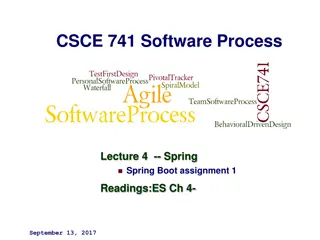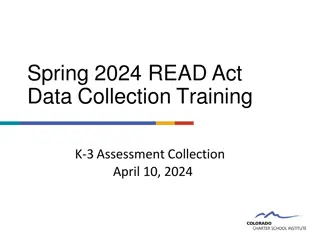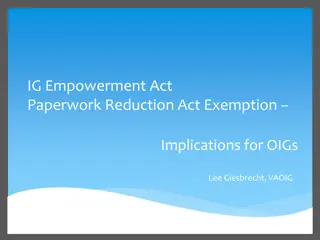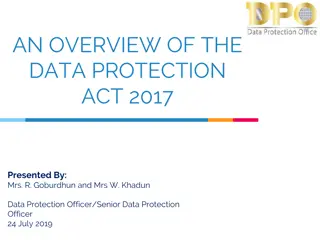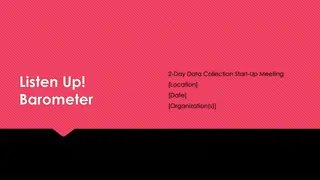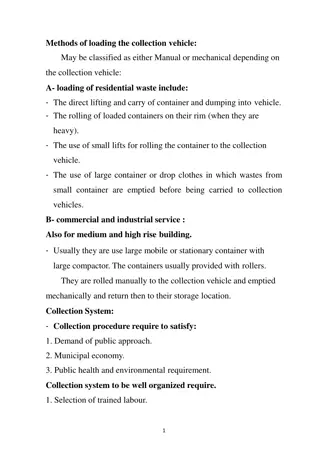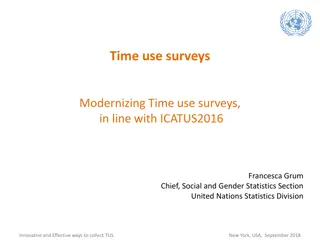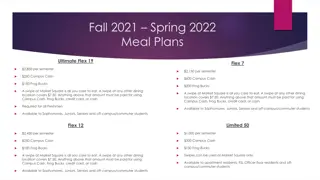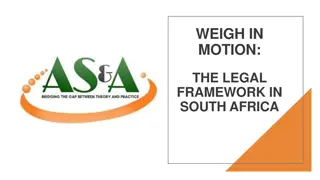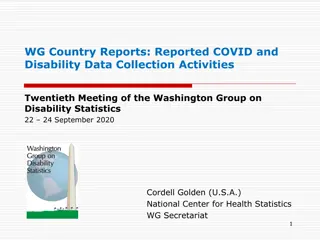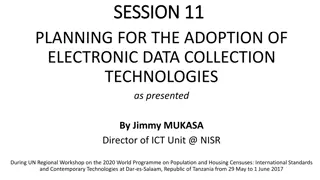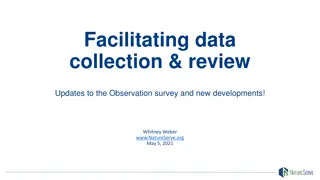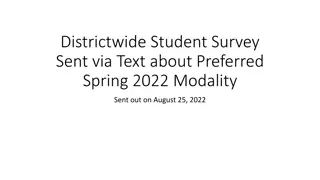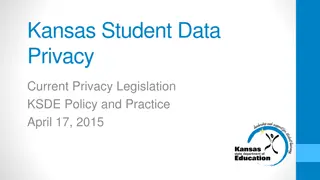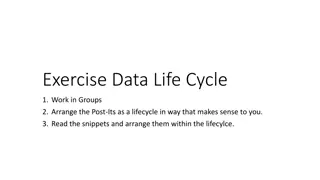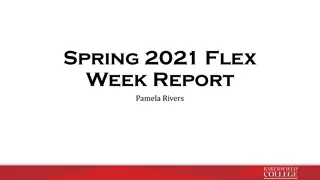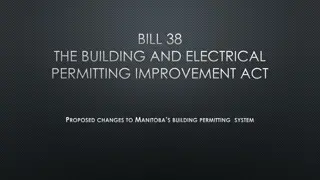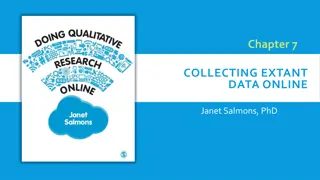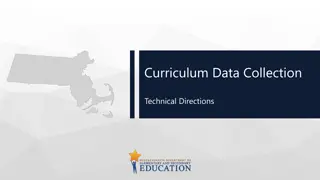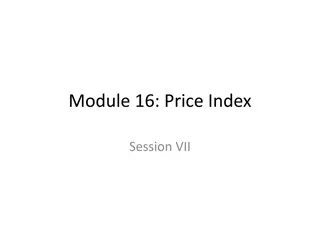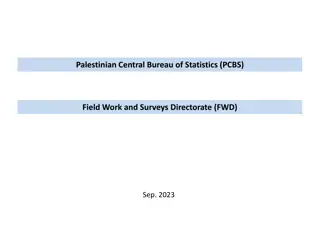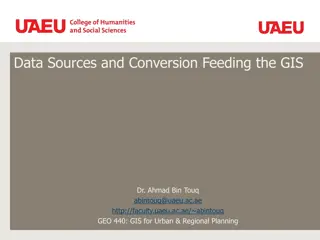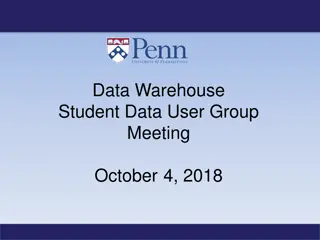Spring 2021 READ Act Data Collection Overview
Explore the comprehensive data collection process for the Spring 2021 READ Act, covering topics such as privacy, security, cohort data, common problems, Q&A sessions, report requirements, budget submissions, and timelines. This detailed overview provides insights into the purpose, required elements, and reporting obligations related to K-3 literacy assessments and interventions. Discover how districts are utilizing READ funds and contributing to educational support for students.
Download Presentation

Please find below an Image/Link to download the presentation.
The content on the website is provided AS IS for your information and personal use only. It may not be sold, licensed, or shared on other websites without obtaining consent from the author. Download presentation by click this link. If you encounter any issues during the download, it is possible that the publisher has removed the file from their server.
E N D
Presentation Transcript
Spring 2021 READ Act Data Collection
Agenda Data privacy and security Purpose of the READ data collection READ collection timeline READ Cohort 2019-20 data elements Common problems and questions Q&A session
Data privacy and security Submissions>READ Act>READ Act 2021* Email jessicawelch@csi.state.co.us once file is uploaded
READ Act Report Requirements K-3 END OF YEAR READ ACT ASSESSMENT DATA (No Change) Districts report student level spring assessment data for all K-3 students that is used to determine the number of students identified as having SRDs and their progress. K-3 LITERACY PROGRAM & ASSESSMENT DATA (New) Districts report school and grade level K-3 literacy assessments, core, supplemental, and intervention programs, as well as intervention services and supports and professional development plan if applicable. READ BUDGETS Districts submit a district budget including a narrative explanation of how they plan to use READ funds in the upcoming school year to ensure that the district s proposed use of money follows allowable uses of READ funds.
Purpose of READ collection Required by statute Fund distribution Reporting, legislative updates, grants, etc. ALL K-3 students included
READ Budget Finance contacts at schools will be sent a READ Budget template the week of April 1. Narrative description Budget line amount Allowable uses document (CSI resource site)
READ collection timeline Now through May 17 18 May 1 June Assess all K-3 students Correct Errors Update Cohort file Deadline for file submission (FZ) READ funds distributed 18 May Early August
READ 4-12th Cohort Separate file- students who left 3rd grade with a READ plan and have not been indicated as exiting their plan in prior year(s). Pre-populated file with only ONE field to update I will notify all schools with a READ cohort file. Cohort files will be available in FileZilla Do not copy paste into main READ Collection file
Update this field with a 0 or 1 ONLY
READ 4th-12th Cohort When does a student exit the cohort? Once a student has reached reading competency (determined locally) they are removed from their READ plan and will be coded as READ plan = 0 (No) which will remove them from the cohort group Do not add students into the cohort. ONLY the READ plan field is updated How has Covid-19 impacted these students? Since there was no data collection last spring (2019-20), the cohort will pull students reported in the 2018-19 school year
2020-2021 data elements No changes from prior years Use most current excel template. Submitted files must be in excel or .csv format. Screenshare: Template
Common Problems & Questions Losing Leading Zeros Opening a file in excel and format is not already set to text Files will not upload properly and will create errors Fix: 1.Select the cells on your worksheet where you ll be adding the data. 1.Right-click anywhere in the highlighted cells, and then on the shortcut menu, click Number Format >Text >OK.
Common Issues An English Language Learner in our school was tested because she is not NEP and she is beyond her first year in a US school. She received a score low enough on PALS to qualify as having a significant reading deficiency. We don t believe the score accurately reflects SRD because we have a body of evidence that says she can read fluently in her first language. READ Plan = 2 (NA because student was not identified with a SRD) READ Status = 4 READ Test = 07 READ Score = 0170 READ Testing Date = 05202020 Recommended Retention = 2 Retained = 2 READ Plan Support = 0 for each
Common Issues A student in my school was unable to be tested due to excessive absences, but the child was enrolled during the period for testing and has a READ Plan in place READ Plan = 1 READ Status = 0 READ Test = 06 READ Score = 9999 READ Testing Date = 05202020 Recommended Retention = 2 Retained = 2 READ Plan Support = Indicate the supports the student received
Common Issues A 1st grade student in our school was placed on a READ plan earlier this year. The Spring DIBELS score is above the cut score so she is no longer identified as having a significant reading deficiency. However, the body of evidence doesn t demonstrate she is at grade level yet. We will keep her on a READ plan. READ Plan = 1 READ Status = 1 READ Test = 07 READ Score = 0812 READ Testing Date = 05202020 Recommended Retention = 2 Retained = 2 READ Plan Support = 0 for each
READ Resources READ Collection resources can be found at: https://resources.csi.state.co.us/read-data- collection/ http://www.cde.state.co.us/coloradoliteracy/read datapipeline
Dont forget! DUE DATE: MAY 18 FileZilla: Submissions>READ Act>READ Act 2021



